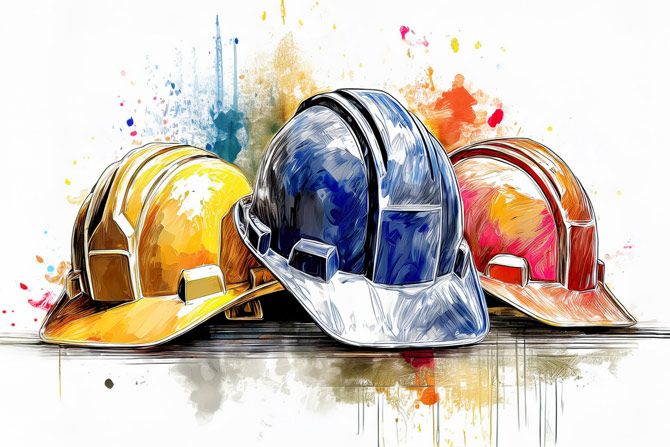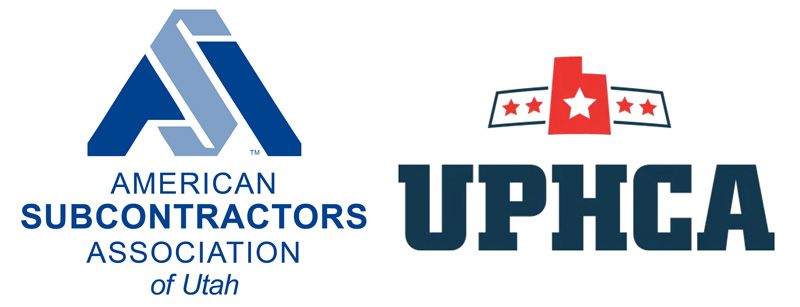There is a time and place for everything, as the saying goes. And now is the time for workplace safety to move out of the backseat and into the front. Safety as a leadership platform should take its place next to profitability, skilled labor concerns and advocacy. It is no less important. Helping to ensure a safe workplace environment for every worker is the responsibility of the industry.
In the 1950s, Utah was a thought-leader in workplace safety. By addressing serious workplace safety concerns at that time, the state developed safety standards and safety orders to protect workers. This initiative was two decades before the formation of the Federal OSHA (Occupational Safety and Health Administration) in 1970. Utah continued to lead out on workplace safety when in 1985, the state received approval to operate its own occupational safety and health programs called the Utah Occupational Safety and Health Act, Utah Code Ann. §34A-6-101 et seq. This act provides UOSH with the mandate to administer all laws and lawful orders to make certain that all employees in Utah have a workplace free of recognized hazards. UOSH falls under the authority of the Utah Labor Commission. Today, Utah is one of 26 states and territories to be considered a state plan.
That is the tradition of occupational safety and health in Utah. So, what does this have to do with you as a business owner? Is a safe workplace considered in your annual strategic planning? Is safety a budgetary item? Are safety training and education of your workforce a checkmark or a blackmark? Does a safety culture exist within your company? If you do not strategically plan for it, it will not occur.
Often, the way we frame an idea can change the way in which we respond. Look at safety as an opportunity to provide a safe workplace in which each employee returns safely to their family each day. Think of it this way. Safety is a value-add for your employees. It shows you care about providing them with a safe workplace. It shows you care about their well-being and the well-being of their families. By providing them with a safe workplace, you build trust between management and site workers. A safe workplace is an added employee benefit.
Leading Indicator
The (2002) blockbuster movie “Minority Report,” starring Tom Cruise, is about a futuristic special police force that can foresee criminal activity before it happens and subsequently prevent it from happening. Think of your safety program along the same lines. In the movie, it is called “pre-crime.” In your safety program, it is called a “leading indicator,” meaning incidents and accidents can be avoided before they happen. As the movie illustrates, we can all see the value of the avoidance of any criminal act before it occurs. So, think of the value of avoiding a safety mishap for your employees, their families and your company before it can occur. The risk is too great to avoid addressing.
Creating a Safety Culture
But where do you start to create a safety culture? Any safety initiative requires the support of all management personnel for successful implementation.
- Begin by building a safety plan and budget into your annual strategic plan.
- Ask questions by completing safety assessments with your employees to measure the current safety initiatives in place. This assessment consists of a confidential survey that can be used to allow employees and supervisors to tell you what they think of your program. You can use the resulting information to improve your program, however necessary. This step is critical to establishing a baseline on which to build.
- Designate an employee or employees to champion safety and decide together what that role will look like. Creating a Safety Committee consisting of employees, insurance brokers, clients, etc., can have tremendous power. This is a great opportunity to engage your employees, show them you care about them, and a critical step for them to develop and buy into realistic goals.
- Join a trade association’s Safety Committee, where the industry comes together to share safety best practices and designate an employee to serve as a member.
Another reason to think seriously about safety and how it relates to the growth of your company is that many of Utah’s general contractors think seriously about safety. When hiring subcontractors, they include safety expectations and criteria as part of their selection process. A good safety process and safety record are becoming every bit as important as experience, qualifications and financial history. Be a standout! Set your company apart with a well-developed and managed safety program. Become a partner in safety, not a liability.
What Resources Are Available?
Insurance companies are risk managers. Reach out to your insurance representative and ask about their risk mitigation program and how they can assist you in developing safety best practices.
A few good topics to get you started:
- Safety Culture Assessment: A confidential survey to allow employees and supervisors to tell you what they think of your program or lack of it. You can use the resulting information to develop and/or improve your program.
- Balanced Scorecard: Begin by establishing a baseline so you can determine whether you are making progress on pre-determined safety goals.
- Managing Risk: Manage risks by using assessments on an individual level or as a group.
If you are a business owner with a restricted bandwidth in which to devote resources safety program, that’s no excuse! Join a trade association’s safety committee. Usually, a one-hour-per-month commitment will provide a starting point for your safety program. Your commitment to safety comes first. ASA and UPHCA can help you the rest of the way.
Contact Dave Hill, Executive Director, for ASA and UPHCA, for more information on safety committee details. Dave can be reached at (801) 671-0429.
Online Resources
OSHA Recommended Practices for Safety and Health Programs
Online OSHA Training Course Catalog
Utah Labor Commission Compliance Assistance










